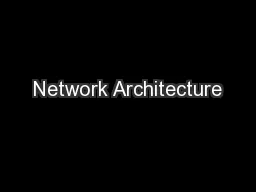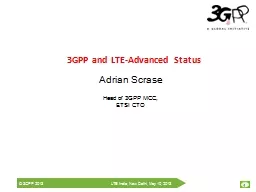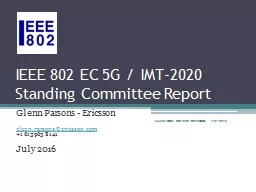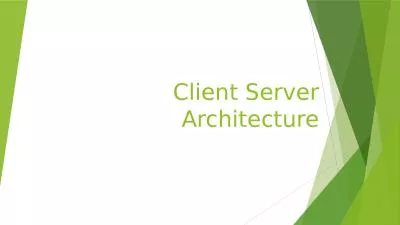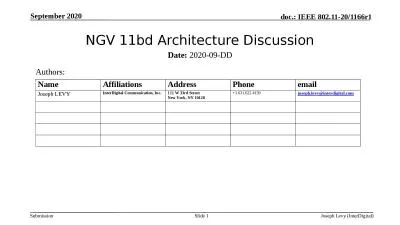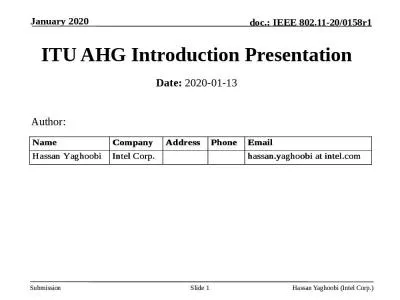PPT-Progress of Network Architecture Work in FG IMT-2020
Author : faustina-dinatale | Published Date : 2018-11-18
Namseok Ko nskoetrirekr Network Architecture Group Champion 5W1H of Architecture Work Gap Analysis phase 1 19 gaps in architecture Draft Recommendations phase
Presentation Embed Code
Download Presentation
Download Presentation The PPT/PDF document "Progress of Network Architecture Work ..." is the property of its rightful owner. Permission is granted to download and print the materials on this website for personal, non-commercial use only, and to display it on your personal computer provided you do not modify the materials and that you retain all copyright notices contained in the materials. By downloading content from our website, you accept the terms of this agreement.
Progress of Network Architecture Work in FG IMT-2020: Transcript
Download Rules Of Document
"Progress of Network Architecture Work in FG IMT-2020"The content belongs to its owner. You may download and print it for personal use, without modification, and keep all copyright notices. By downloading, you agree to these terms.
Related Documents


